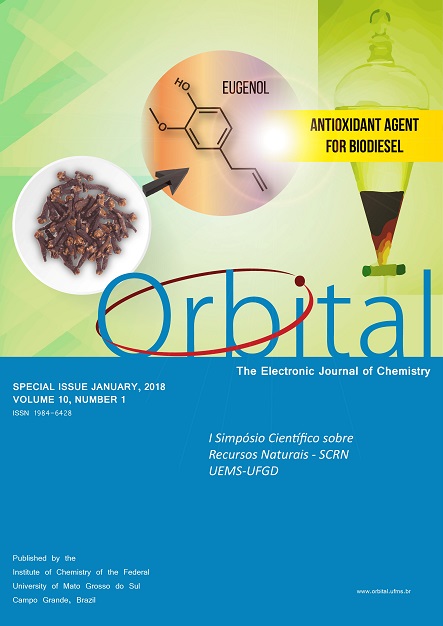Evaluation of Potentiometric Methods for Acid Number Determination in Commercial Biodiesel Samples and Proposal of Alternative Method
- commercial biodiesel,
- acid value,
- potentiometric titrations,
- alternative method
Copyright (c) 2018 Orbital: The Electronic Journal of Chemistry

This work is licensed under a Creative Commons Attribution-NonCommercial-NoDerivatives 4.0 International License.
Abstract
The acid number (AN) is an important parameter that informs the quantity of free fatty acids (FFA) and acids originating from degradation reactions of biodiesel during production process and its storage. Due to the need to research and evaluate new environmentally friendly methods that reduce the toxic use solvents and minimize amounts of sample without significant loss of precision in the AN measurements by ASTM D664 method, the aims of this work were: i) to establish a procedure of cleaning and hydration of glass electrode to perform AN analyzes according ASTM D664 method in two commercial B100 biodiesel samples produced at Brazilian central-west region; ii) to propose the modification of the ASTM D664 method by reducing the amount solvent mixture and the sample size and to compare AN values obtained for cited samples with those obtained by ASTM D664 and EN 14104 methods. We proposed a simple procedure of cleaning and hydration of electrode. In this procedure, after each titration of the sample, electrode is rinsed with small portion of ethanol (approximately 5 mL) and then the electrode is immersed in distilled water by 15 min. The method proposed in this work is a modification ASTM D664 method, reducing by half the amount of sample and using only 50 ml solvent mixture against 125 for the official method. The acid number values determined indicate that biodiesel samples are in agreement with the maximum value stipulated by ANP resolution. By statistical analysis with confidence level of 95%, the results obtained with the proposed method are significantly equivalent to the official method ASTM D664, presenting satisfactory results, since the modification reduced the amount of solvent mixture by 60% and the sample amount by 50% used in the analysis, contributing to environmentally friendly analyzes and favoring both sustainable development and economic issues linked to biofuel research.


